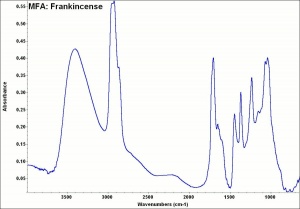Difference between revisions of "Olibanum"
Jump to navigation
Jump to search
m (Text replace - "\[http:\/\/cameo\.mfa\.org\/materials\/fullrecord\.asp\?name=([^\s]+)\s(.*)\]" to "$2") |
|||
| Line 12: | Line 12: | ||
''Boswellia caterii''; frankincense; olíbano (Esp.); Incenso di Somalia (It) | ''Boswellia caterii''; frankincense; olíbano (Esp.); Incenso di Somalia (It) | ||
| − | == | + | ==Resources and Citations== |
* Thomas Gregory, ''The Condensed Chemical Dictionary'', Reinhold Publishing, New York, 3rd ed., 1942 | * Thomas Gregory, ''The Condensed Chemical Dictionary'', Reinhold Publishing, New York, 3rd ed., 1942 | ||
Latest revision as of 16:29, 9 August 2022
Description
A natural, triterpenoid gum-resin obtained from the Boswellia caterii trees native to Africa and Arabia. Olibanum, or frankincense, contains 3-8% volatiles oils (pinene, Dipentene), 60% resins (mostly triterpenoids), 20% gums, and 6-8% Bassorin. Olibanum comes in hard yellow grains. It is used in incense and perfumes.
Synonyms and Related Terms
Boswellia caterii; frankincense; olíbano (Esp.); Incenso di Somalia (It)
Resources and Citations
- Thomas Gregory, The Condensed Chemical Dictionary, Reinhold Publishing, New York, 3rd ed., 1942
- G.S.Brady, Materials Handbook, McGraw-Hill Book Co., New York, 1971 Comment: p. 589
- Random House, Webster's Encyclopedic Unabridged Dictionary of the English Language, Grammercy Book, New York, 1997
- The Merck Index, Martha Windholz (ed.), Merck Research Labs, Rahway NJ, 10th edition, 1983 Comment: entry 6969
- Ancient Egyptian Materials and Technologies, Paul Nicholson, Ian Shaw (eds.), Cambridge University Press, Cambridge, 2000 Comment: M.Serpico, R.White, "Resins, Amber and Bitumen

